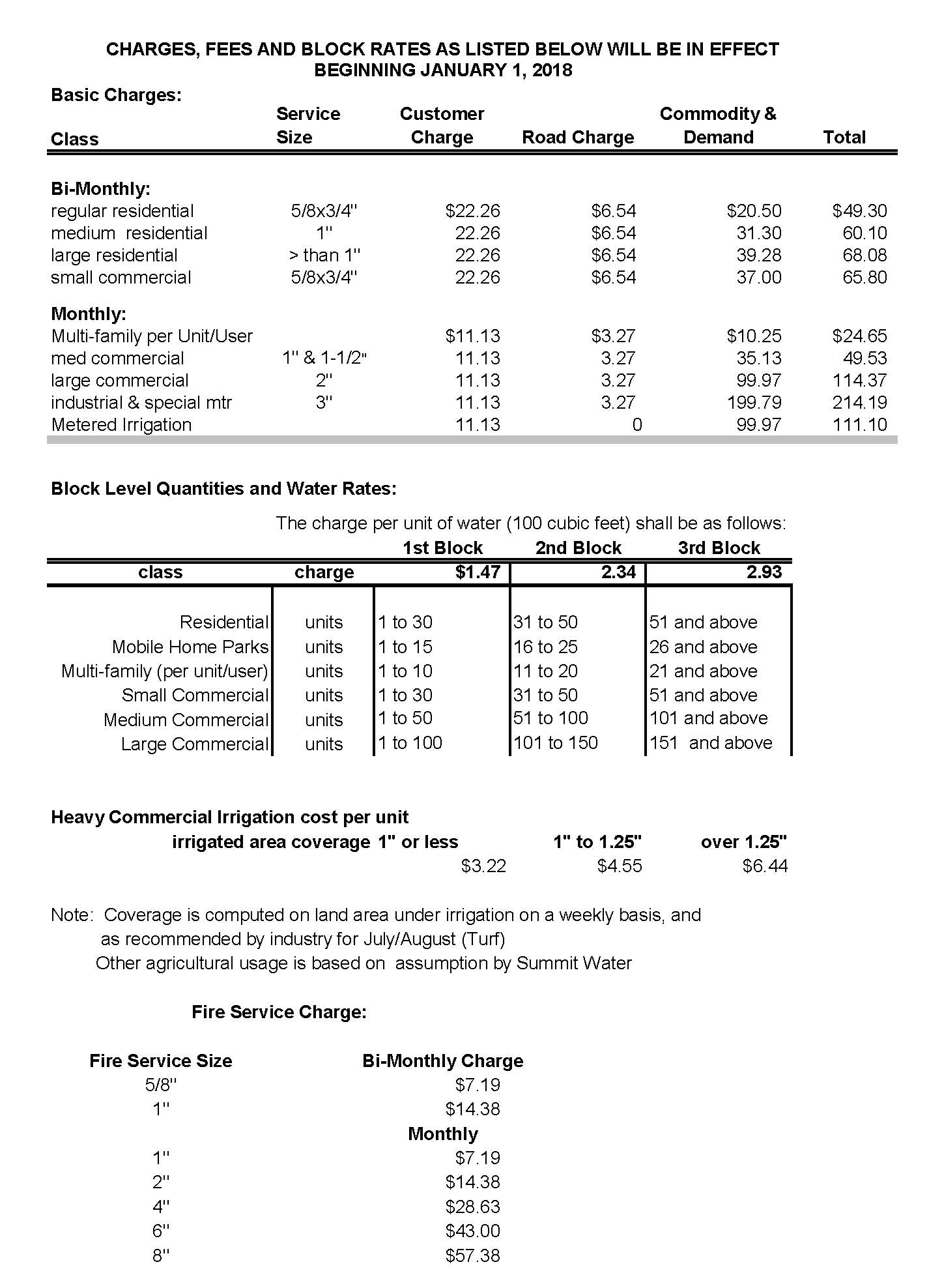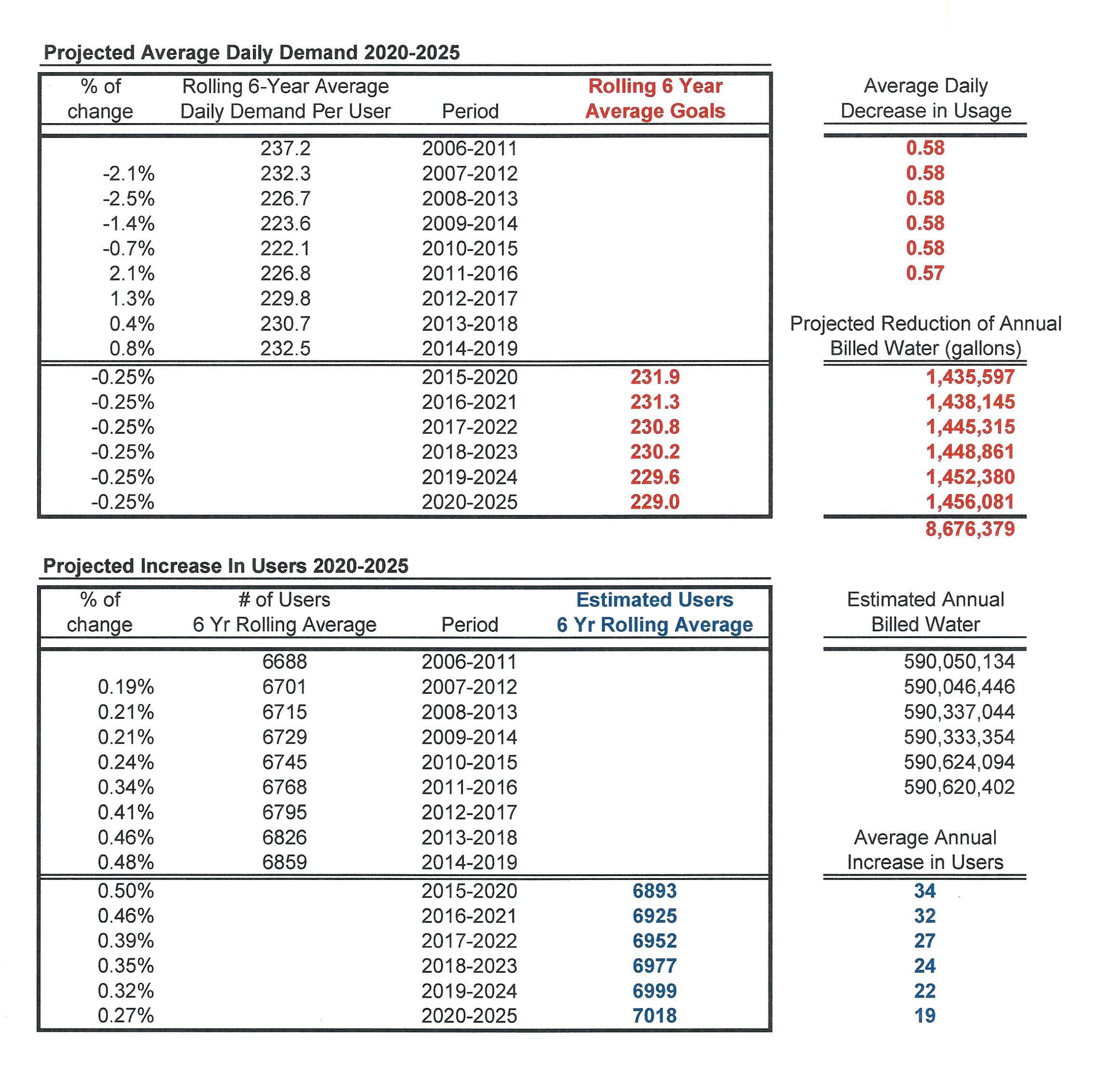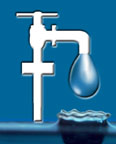|
Proposed
Growth
Summit Water’s
retail service area consist of approximately 6,550 parcels.
This estimate is made from map records obtained from the
Pierce County Assessor’s office and information in Summit’s
member files. Active
commitments for service include 33 pending water availability
certificates. These
certificates are approved for an estimated 248 additional users.
The high number of estimated users verses pending water
certificates reflects the increasing multi-family and condominium
development within the Summit area.
Restrictions
on further subdivision of land will determine whether and to what
extent new lots are created. Most
of Summit Water’s service area falls within the “Mid-County
Community Plan” and is designated “Rural Separator”, which
carries a 2.5 acre minimum restriction.
Considering restricted land uses and density, Summit Water's
commitments on active water availability certificates and the high
proportion of lots of record already served by the company, Summit
Water's existing system may be considered to be approaching the
limits of growth.
In
order to estimate the future number of users, assumptions must be
made for the number of users that arise from development of the
remaining lots, and possible additions of users to lots already
developed. The small
areas of mixed and moderate density use within Summit Water’s
service area may be developed by further subdivision of land.
As
part of Summit Water's latest water system plan, a "buildout
analysis" was conducted to determine the total number of users
the system is capable of serving. Based on remaining buildable
land and current zoning, it is estimated that together with the
committed service to the current 6,950 users that an additional
1,824 users could be added to the system.

Customer
Class/Billing System
In
1989, Summit Water implemented new billing software and, as part of
that system, developed a formal set of customer classes.
Data entered into the billing software included the customer
type, the number of units served and the bi-monthly amount of water
consumed. The 8 classes
of customers are assigned as follows:
Customer
Class
Residential
Multi-family
Small Commercial
Medium Commercial
Larger Commercial
Industrial/Special Use
Irrigation
Fire
The volume of water used by each customer in
each billing period, beginning in 1990, could be extracted from the
database by the billing software.
This data provides a means of evaluating the characteristic
monthly and annual demand by customer classes and number of units.
Rate Structure
Rate structures are an important component of promoting water
conservation. Additional
factors, such as metering, billing frequency, the need for resources
and Distribution System Leakage (DSL) water can all impact
conservation efforts.
Based on the rate
structure in place, customers make decisions to consume or not
consume water. Generally,
higher water rates lead to lower water consumption.
By structuring conservation-oriented rates which are higher
at certain usage levels, customers will be encouraged to consume
less water overall. It
is important to note that conservation-oriented rates are meant to
restructure rate components rather than increasing rates overall.
In 2000, Summit Water implemented an inverted
block rate structure, which separated consumption levels into three
blocks, with rates per unit increasing as the level of consumption
increases. Block rates
have been set in relation to system consumptions for each customer
class. Based on this
type of rate structure, customers who have higher levels of
consumption within a particular customer class will face higher
rates and therefore will pay higher cost.
For Summit Water’s conservation rates to be
effective, meters are frequently read and customers billed in a
timely manner. Monthly
or bi-monthly meter reading and billing provide timely information
on water consumption such that conservation rates can be more
effective.
To help our customers better understand their
consumption patterns and take measures to conserve water, Summit
Water provides a historical consumption comparison (bar graph chart)
on all water bills showing the past twelve billings for all customer
classes.
Following is Summit Water’s current rate
schedule and charges for all customer classes, which went into
effective on January 1, 2018:

Conservation
Program Measures
As defined in “Table 5-1” of the “Water
Use Efficiency Guidebook” and based on the number of connections,
Summit Water is required to identify and implement six (6) water use
efficiency measures. Based
on Summit Water’s current conservation measures, we exceed the
number of measures needed to satisfy the “Water Use Efficiency”
(WUE) rule. Following
are the measures Summit Water has chosen to use for meeting the WUE
rule for the reporting period of 2020 to 2025:
1)
Summit Water is currently using an inverted block rate
structure for billing of its residential, multi-family, commercial
and irrigation class customers.
This rate structure was designed to reward water conservation
with lower bills for lower usage.
The current water rate structure is an inverted block rate
(three tiered), which means as a customer’s usage increases, their
rates increase accordingly within the three block rates.
As noted in
“Chapter 5” of the “Water Use Efficiency Guidebook”, this
WUE measure is being implemented for four (4) different customer
classes, therefore it will count as four (4) measures;
2)
Summit Water currently provides its residential,
multi-family, commercial and irrigation customers with historic
water consumption on their monthly and bi-monthly bill.
The data provided is shown by use of bar
graph chart for the previous twelve (12) billings and provides water
consumption in units by billing period.
This helps our customers better understand their consumption
patterns and take measures to conserve water.
As noted in “Chapter 5” of the “Water Use Efficiency
Guidebook”, this WUE measure is being implemented for four (4)
different customer classes, therefore it will count as four (4)
measures;
3)
During the billing process, if an account is flagged
as having an abnormally high meter reading (at least twice the
average consumption for the same billing period in the prior two
years) billing staff will notify the customer of our findings and
provided advice on where to find information regarding leak
detection services. Upon
verification by Summit Water that the leak has been repaired, a
customer may apply for and may be awarded a leak credit. If a credit
is awarded it shall only apply towards the water portion of the bill
above their normal consumption for the same billing period.
Leaks must be repaired in a timely manner in order to be
considered for a leak credit. As noted in “Chapter 5” of the “Water Use Efficiency
Guidebook”, this WUE measure is being implemented for four (4)
different customer classes, therefore it will count as four (4)
measures;
4)
Continued education and information sharing with
customers through use of Summit Water’s annual letter, web site,
water bill information center and through our participation as a
member of the Regional Water Cooperative of Pierce County.
Summit Water is proud of the progress it has
made in reducing the average annual and peak day demand per customer
as well as our continued efforts to reduce the Distribution System
Leakage (DSL) water to below 10%.
As stated above and detailed in the beginning of this
document, Summit Water has already implemented a number of
conservation elements that meet and exceed the requirements of the
WUE rule and will continue the use of these measures in meeting
future conservation goals.
Summit
Water's WUE Goals
Summit Water’s
conservation goals for this planning period will be to reduce the
average daily demand (ADD) by at least 0.25% per user per year based
on a rolling six-year average. This
should reflect a general reduction of usage at a rate of
approximately 0.25% per year for all users over the next six years.
The use of a rolling six-year average is to reduce impacts of
any given year being particularly warm and dry or cool and wet.
Presented below is a chart detailing historic
information relating to Summit’s ADD per user and increase of
users from 2000-2025 based on a rolling six year average.
Also provided is an estimated decrease in the ADD per user,
reduction of annual billed water, as well as an estimated increase
of users and our anticipated billed water for the planning period of
2020 to 2025.

Downloadable PDF Link Below
Summit
Water’s Proposed Water Use Efficiency Measures and Goals
|


